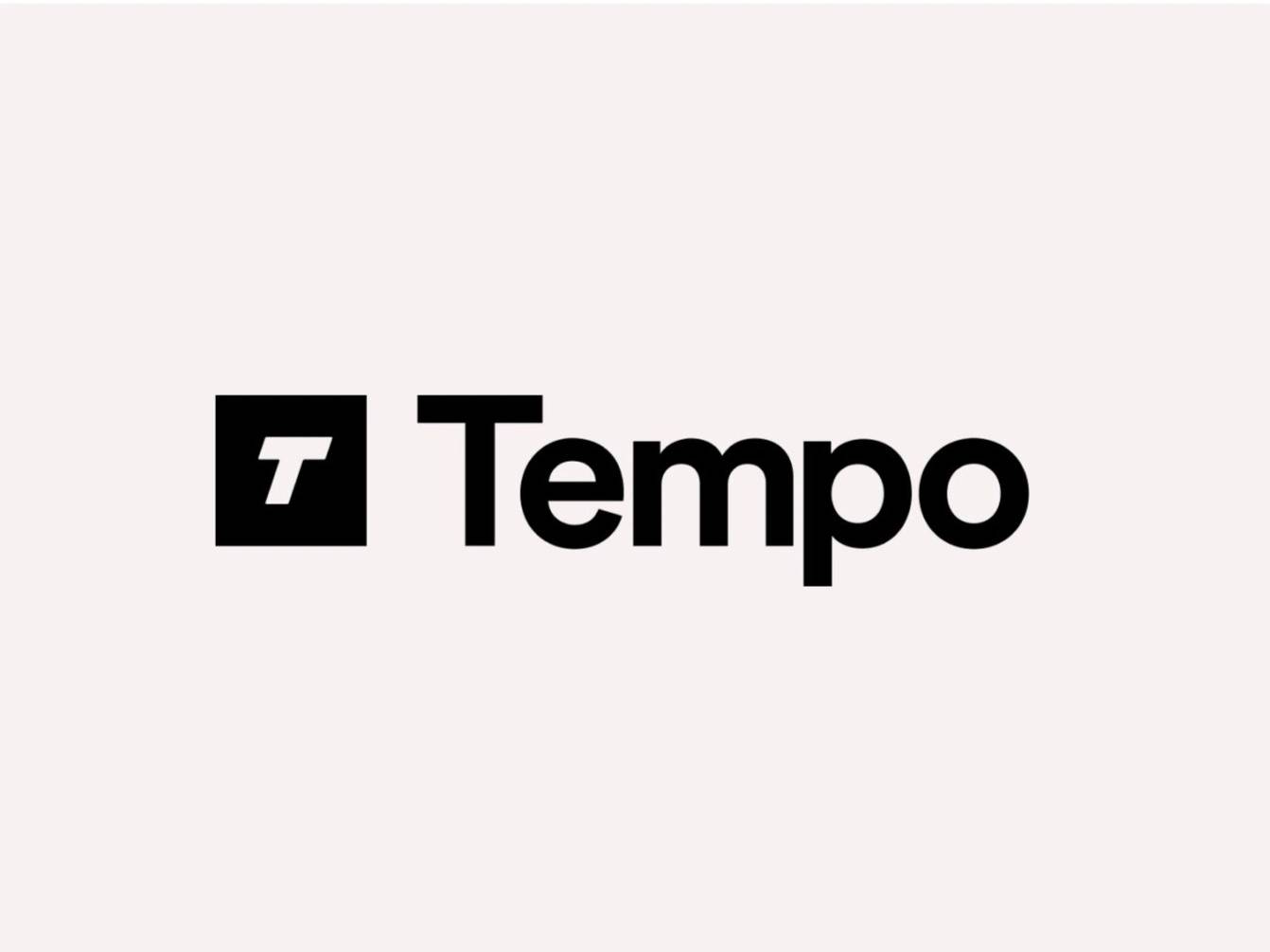订阅 wiki
Share wiki
Bookmark
Tempo
Tempo
Tempo 是一个由金融科技公司 Stripe 和加密货币投资公司 Paradigm 孵化的 Layer 1 区块链。它是一个与 EVM 兼容的网络,专门设计用于为高容量、真实世界的支付用例提供专用基础设施,主要关注 稳定币 交易。 [1] [2]
概述
Tempo 的开发旨在解决通用区块链的不足之处,这些区块链通常针对交易或 去中心化金融 (DeFi) 而优化,而不是支付。据其支持者称,现有的大部分加密基础设施“在支付方面的优化相对不足”,导致网络拥塞和不可预测的交易费用等问题,阻碍了支付应用的主流采用。 [3]
Tempo 旨在通过提供一个专门的、高吞吐量的网络来解决这个问题,该网络具有为金融服务、商业和人工智能领域的企业和开发人员量身定制的功能。 [1]
该项目的核心价值主张是为基于稳定币的支付提供一个中立、无需许可的平台,该平台具有可扩展性、快速性和成本效益。它结合了 Stripe 在全球支付方面的经验和 Paradigm 在加密货币方面的专业知识,为全球支付、汇款和代币化存款等用例创建了一个基础设施层。 [2]
Tempo 负责人 Matt Huang 表示:
“我们相信 Tempo 将补充现有的加密基础设施,并成为许多大型企业进入链上的渠道,从而增加加密工具和基础设施的采用。” [3]
该网络并非旨在取代其他区块链,而是旨在满足高容量支付流的特定要求。 [1]
历史
2025 年 8 月,《财富》杂志首次报道称,Stripe 和 Paradigm 正在合作开发一个以支付为重点的区块链,该报道援引了匿名消息来源。 [4]
该项目于 2025 年 9 月 4 日正式宣布。该公告确认 Tempo 已在私有 测试网 上线,并优先授予选定的一组设计合作伙伴进行测试。 [2]
Tempo 的推出被认为是 Stripe 更广泛的加密货币服务战略扩张的一部分。
在此之前,该公司于 2025 年 5 月推出了“稳定币金融账户”。 [4]
在宣布时,该项目被设置为独立运营,拥有自己的全职团队,同时保持与 Stripe 和 Paradigm 的联系。
该网络的初始验证者集由设计合作伙伴组成,并声明了随着时间的推移过渡到完全无需许可的验证者模型的路线图。 [3] [4]
技术
Tempo 是一个与以太坊虚拟机 (EVM) 兼容的 Layer 1 区块链,使用 Reth 构建,Reth 是一个基于 Rust 的 以太坊 执行层。它的架构从头开始设计,以支持大规模的以支付为中心的操作。 [3]
架构与性能
该网络经过精心设计,可实现高吞吐量和低延迟,以促进全球实时支付。其声明的性能指标包括:
- **吞吐量:**能够处理每秒超过 100,000 笔交易 (TPS)。
- **最终性:**实现亚秒级交易最终性,确保交易几乎立即得到确认和结算。
这些性能特征旨在满足大规模商业和金融应用的需求。 [1] [4]
主要特点
Tempo 包含多项专门设计的功能,以优化支付的用户体验并满足企业合规性要求。 [2]
- **专用支付通道:**该区块链具有专门为支付转账保留的隔离区块空间。这种设计确保支付交易保持廉价和可靠,不受来自其他链上活动(如 DeFi 或 NFT 交易)的拥塞的影响。该通道还包括一个可选的隐私功能,允许用户保护交易详细信息。 [3]
- **稳定币中立性和费用灵活性:**Tempo 的核心原则是对稳定币保持中立。该协议包括一个“内置”或原生自动做市商 (AMM),可促进不同稳定币之间的低费用兑换。这种内置交易所允许用户使用任何受支持的 稳定币 支付交易 gas 费用,从而无需持有特定的原生 gas 代币。 [2] Matt Huang 表示,“我们正在以去中心化和中立的原则构建 Tempo。这包括:稳定币中立性:任何人都可以发行稳定币,并且任何稳定币都可以用于支付/gas。” [4]
- **支付专用工具:**该网络包括对传统支付系统中常见功能的原生支持。它通过原生账户抽象支持批量转账,允许在单个链上交易中发送多笔付款。它还具有备忘录字段,可以包含上下文数据,专为与 ISO 20022 等金融消息传递标准兼容而设计,以简化链下对账。 [1]
- **合规性和安全性:**Tempo 提供内置工具来帮助企业满足监管要求。这些工具包括通过阻止列表和允许列表设置用户级别权限的功能,以及在保持合规标准的同时保护用户数据的隐私措施。 [1]
用例
Tempo 旨在支持具有大量经济流动的公司的各种真实世界支付应用。Stripe 首席执行官 Patrick Collison 指出,该项目旨在促进各种链上活动。 [4] 该项目已确定了几个关键用例:
- **全球支付和汇款:**实现向个人和企业的即时、低成本跨境支付,而无需传统银行系统的延迟。
- **嵌入式金融:**允许开发人员使用任何稳定币将合规、可编程的支付系统直接构建到他们的产品中。
- **代币化存款:**将客户资金转移到链上,以实现 24/7 结算和更高效的银行间转账。
- **微交易:**促进数字商品、按需服务和其他低价值交易的亚美分支付。
- **代理商务:**为自主 AI 代理提供基础设施,以进行商品和服务的即时、低成本支付。
这些用例反映了该项目专注于将传统金融和商业与区块链技术连接起来。 [1] [3]
团队与支持者
Tempo 是由全球金融基础设施平台 Stripe 和专注于加密货币的投资公司 Paradigm 共同发起的项目。
该项目由 Matt Huang 领导,他也是 Paradigm 的联合创始人兼管理合伙人。Huang 在担任 Tempo 负责人的同时,继续担任 Paradigm 的职务。 [3]
虽然由 Stripe 和 Paradigm 孵化,但 Tempo 作为一个独立的实体运营,拥有自己的专门团队。该项目利用 Stripe 在全球支付行业的丰富经验和 Paradigm 在加密货币协议和基础设施方面的深厚专业知识。 [2]
设计合作伙伴
在其开发过程中,Tempo 与来自各个行业的公司联盟合作,以提供设计输入并确保区块链满足广泛的真实世界需求。这些合作伙伴涵盖金融服务、技术、电子商务和人工智能。宣布的设计合作伙伴包括:
- **AI:**Anthropic、OpenAI
- **商业和技术:**Coupang、DoorDash、Shopify
- **金融服务和金融科技:**德意志银行、Lead Bank、Mercury、Nubank、Revolut、渣打银行
发现错误了吗?
